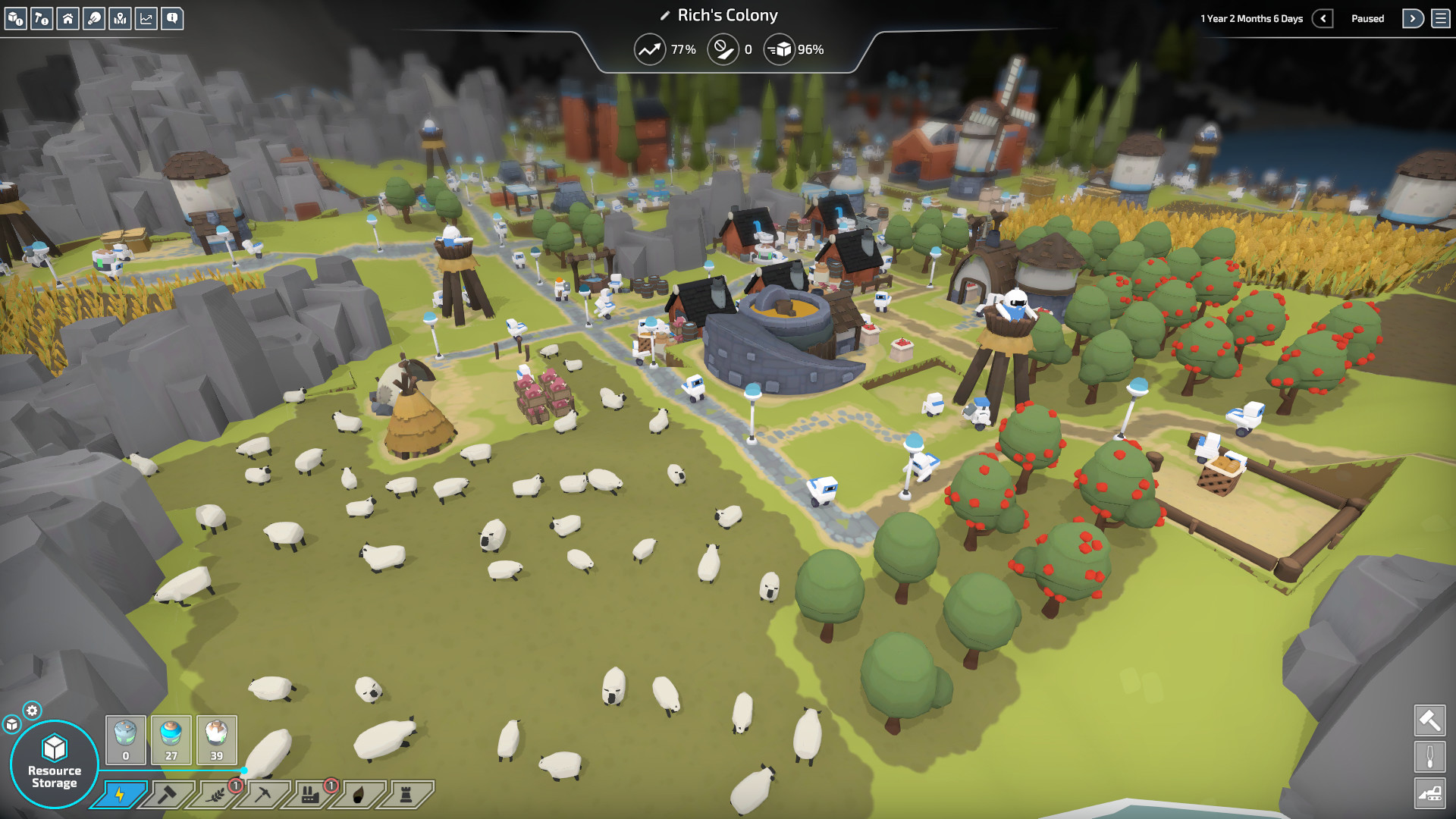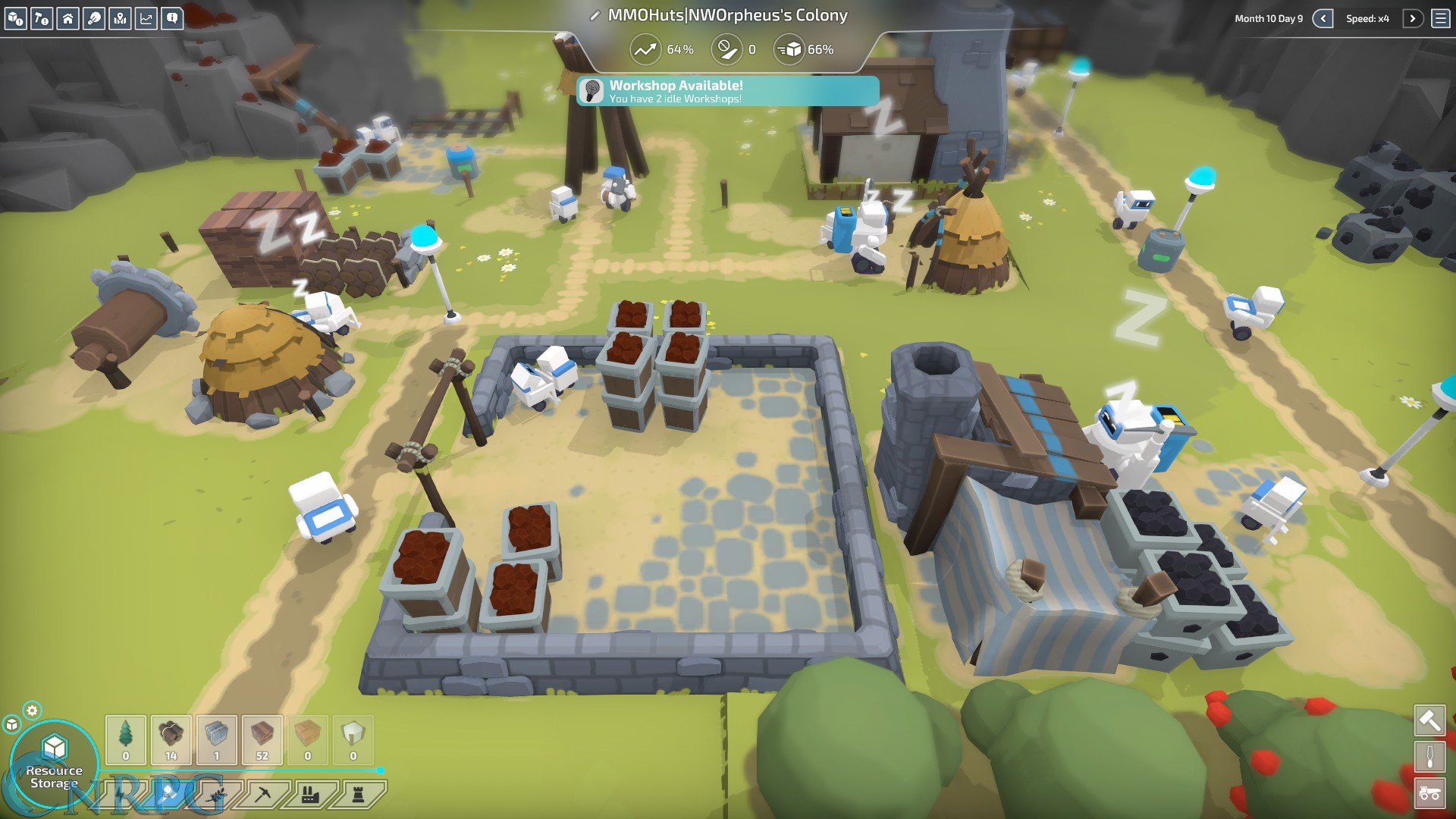

Ultimately we went with Energy being a physical resource like everything else and limiting it to only being required by certain collection buildings and it ended up working pretty well. This didn’t scale up particularly well, so we went through a few other stages, including a happiness system for the robots and delineated ages which you had to progress through. It began as an abstract global number which was automatically distributed across all the production buildings in your colony. The Energy system was one mechanic which ended up changing several times during development.

This gives you some really interesting optimization options where you can group shared economic buildings together to reduce traffic on your road network.īut there is a fine balance to be had as if your interconnected paths are too long, the productivity of your buildings will suffer as the stackbots will have too far to travel and building production will back up. This path system give you two extra benefits when laying out your colony.įirstly it gives you more freedom and allows more creativity in your town planning and secondly, if two buildings share the same path, they will be able to deliver resources to each other directly, rather than having to collect from a road post. Each building has its own stackbot who will use a path to collect incoming resources from road posts and drop off resources that the building has produced. The second type is the path, which connects a building to a road. Each road has a carrybot who moves resources between these road posts as required and this kind of mechanic will be familiar to anyone who played the early Settlers games. Road posts act as temporary storage nodes and can hold four resources. Roads are connections between two road posts. There are two types of main routes in the game: roads and paths. If you watch any bot for a minute, it’s quite easy to follow what each one is up to. Lumberbots just go and chop down the nearest tree. Stackbots follow paths and only bring in and drop off resources. Carrybots just take one resource from one road post to the other. One of the core concepts of the game was to have all the resources one-to-one, as in they all take up the same physical space and that you could always see where every resource is all of the time, whether it’s being carried by a bot, it’s on a boat or train, or in storage.Īnd the same applies to the robots: each of their jobs is focused on either moving, collecting or consuming these resources and taken on their own, each robot’s job is quite simple. Developing logic behind the robots and using paths to connect them to buildings But again, these panels are designed not to intrude too much and can be kept open as you continue to play. Once you’ve noticed an issue that you might want to dig into more, then there are various panels that you can open and there are various numbers and graphs telling you such things as whether you’re making a surplus of a particular resource, how productive a building is, or what route a resource is taking across your colony. The game is designed so a lot of what is happening can be read visually within the game world in that you can physically see each resource moving about: you can watch a Lumberbot chop down a particular tree and you can see an angry carrybot emoting if their road is being blocked by too much traffic. One principle was to try and minimize the information, particularly numbers, that is on the screen by default.

The colonists game strategy how to#
UI is one of the most important elements for any strategy game and like most, The Colonists has a lot of number crunching and statistics driving the game behind the scenes.įiguring out what to show the player, and how to show it, is a tricky balancing act as you want important information to be easily visible or accessible to players but you don’t want to overwhelm them, especially as it’s generally quite a laid-back game. Designing a clear and concise yet packed UI I got the chance to interview Richard Wallis, the developer behind The Colonists via email about creating and designing this cute yet challenging game. Looking for peace and to become more like the humans they use to live with, you will need to help these robots follow their dreams. These robots tend to follow the best paths automatically, fulfilling tasks, moving resources, and generally trying to be more human than robot. Through building various paths, roads, and structures, you can start to make your own bit of land for your colony - all which will work towards being self-sustaining. Inspired by the Settlers games and the Anno series, The Colonists give you a team of robots to control and become human.


 0 kommentar(er)
0 kommentar(er)
